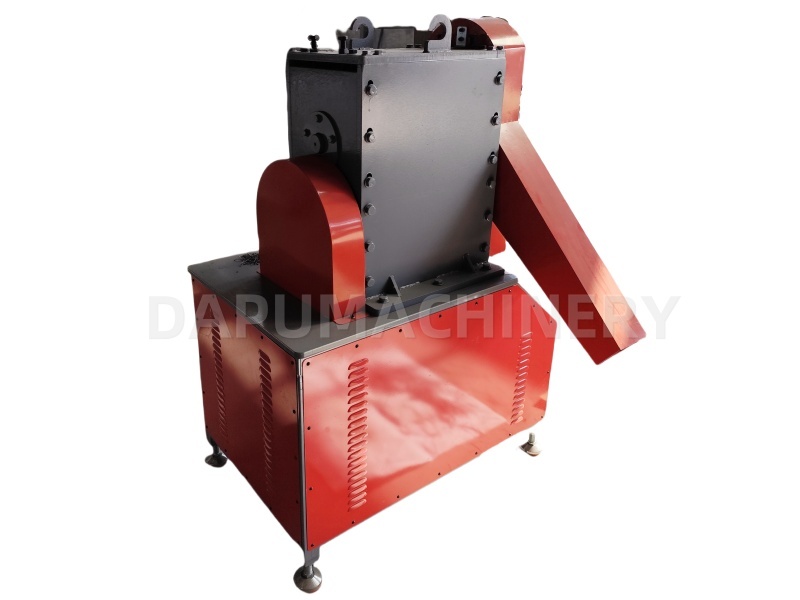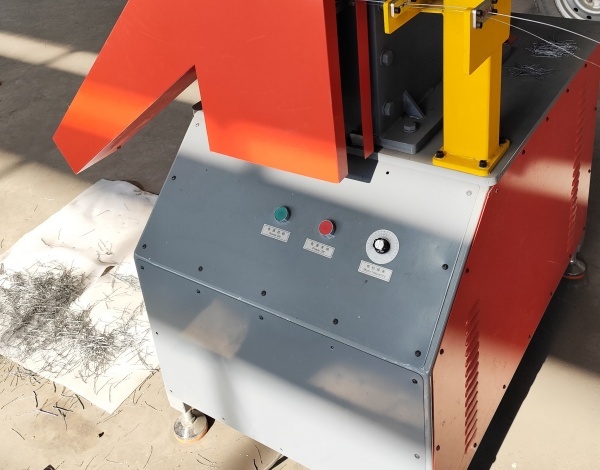
How to Increase Output and Save Costs with a Fully Automatic Steel Fiber Machine
Category:News
Author:
Source:
Add time:2025-04-25 11:37
In fast-growing markets like Africa, the Middle East, and Southeast Asia, construction and manufacturing businesses face a dual challenge: meeting rising demand for steel fibers while keeping production costs low. Labor shortages, energy volatility, and material price fluctuations further complicate this balance. A fully automatic steel fiber machine like the DAPU DP-2000 offers a proven solution to boost productivity and reduce expenses—but only if you leverage its features strategically.


Here’s a actionable guide to maximizing output and minimizing costs, tailored to the realities of emerging markets.
1. Automate to Eliminate Labor Dependency
Manual or semi-automatic machines require constant operator input, leading to slower speeds, human errors, and higher wage bills. In contrast, a fully automatic system streamlines the entire process—from wire feeding to cutting and shaping—with minimal supervision.
DAPU DP-2000’s Edge:
Automatic Wire Feeding: Adjusts tension and speed based on material thickness (0.3–1mm), preventing jams and waste.
Self-Calibrating Blades: Maintain consistent fiber lengths (up to 60mm) even during 7-ton/day production.
Uninterrupted Operation: Runs 8–10 hours/shift with one operator, versus 3–4 workers for manual machines.
Case Study:
A Philippine factory reduced labor costs by 60% after switching from semi-automatic machines to the DP-2000. The saved funds were redirected to raw material procurement, increasing monthly output by 35%.
2. Optimize Energy Use for Unstable Grids
High energy consumption is a silent budget killer in regions like Africa, where diesel generators often supplement unreliable grid power. A machine’s motor efficiency directly impacts fuel costs and carbon footprints.
How the DP-2000 Cuts Energy Bills:
3kW Motor: Consumes 50–70% less power than traditional 5–7kW models.
Smart Start-Stop Function: Halts operation during material reloading, saving idle-hour electricity.
Solar Readiness: Compatible with hybrid solar-diesel systems (e.g., Nigerian factories use solar panels to offset 30% of energy needs).
Cost Savings Example:
In Ghana, a DP-2000 user reported annual energy savings of $4,200 compared to a TurboSteel X3, despite similar output levels.
3. Leverage Raw Material Flexibility
Emerging markets often rely on locally available or recycled materials to cut import costs. However, inconsistent wire quality can cause machine downtime or defective fibers. A fully automatic machine with adaptive settings mitigates these risks.
DP-2000’s Material Mastery:
Handles Mixed Inputs: Processes stainless steel, galvanized wire, and recycled iron wire without recalibration.
Automatic Diameter Detection: Adjusts cutting pressure to accommodate 0.3mm–1mm wires, reducing breakage.
Waste Reduction: Precision controls ensure 98% material utilization vs. 85% in manual systems.
Regional Application:
In Vietnam, a manufacturer uses cheap recycled bicycle spokes (iron wire) to produce corrugated fibers for rural roads. The DP-2000’s tolerance for imperfect materials cut raw material costs by 22%.
4. Scale Output Without Adding Machines
Many businesses in growth markets can’t afford multiple machines for different fiber types or volumes. A versatile automatic system lets you pivot quickly between products and scales.
DP-2000’s Scalability Features:
Adjustable Speed: Produce 2 tons/day for small orders (e.g., Kenyan housing projects) or ramp up to 7 tons/day for mega-infrastructure (e.g., Saudi NEOM contracts).
Quick-Change Tooling: Switch between hooked, corrugated, or straight fibers in <15 minutes.
Batch Memory: Save settings for repeat orders, avoiding setup delays.
Example:
An Egyptian contractor uses one DP-2000 to serve two markets:
High-Volume: 7 tons/day of straight fibers for desert highway barriers.
Premium Niche: 3 tons/day of hooked fibers for luxury villa foundations.
5. Slash Maintenance Costs in Harsh Conditions
Dust, humidity, and rough handling in markets like Indonesia or Nigeria can shorten equipment lifespan. Fully automatic machines with robust designs prevent frequent breakdowns and costly repairs.
DP-2000’s Durability Advantages:
Dust-Proof Enclosure: Protects internal components in Saharan sandstorms.
Corrosion-Resistant Coatings: Withstand coastal humidity in Thailand or Mozambique.
Modular Parts: Replace individual components (e.g., blades) instead of entire units—critical where technical support is limited.
Maintenance Cost Comparison:
| Machine | Annual Maintenance Cost (Africa) |
|---|---|
| DAPU DP-2000 | 1,800 |
| GlobalTech G5 | $4,500+ (requires imported parts) |
| IronFlex C1 | $900 (but 3x more downtime) |
6. Reduce Training Time and Errors
Complex machines demand skilled operators—a challenge in regions with high staff turnover or limited training infrastructure. User-friendly automation simplifies operations.
DP-2000’s Intuitive Features:
Touchscreen Interface: Pre-loaded programs for common fiber types (e.g., “Hooked-60mm” or “Corrugated-0.5mm”).
Error Alerts: Notifies operators of issues like wire misalignment or motor overheating.
Remote Diagnostics: DAPU’s regional hubs in UAE and Kenya provide troubleshooting via app.
Training Impact:
A Sudanese factory trained operators in 2 days (vs. 2 weeks for a GlobalTech G5), reducing early-stage errors by 90%.
7. Maximize ROI with Multi-Client Agility
Many small and mid-sized businesses serve diverse clients—from governments to private developers. A flexible machine lets you profit from varied contracts without overinvesting.
DP-2000 ROI Strategies:
Rent Idle Capacity: Lease machine time to smaller workshops during off-peak periods.
Diversify Products: Use the same machine to make fibers for roofing, 3D-printed concrete, or shotcrete.
Bulk Discounts: Buy raw materials in larger volumes by consolidating orders across projects.
ROI Case:
A Moroccan manufacturer achieved 100% ROI in 18 months by combining highway contracts (high volume) and custom fibers for historical building restoration (high margin).
Pitfalls to Avoid with Automatic Machines
Overpaying for Unnecessary Features: Avoid machines with IoT or AI add-ons—they’re prone to failure in dusty/humid conditions.
Ignoring Local Support: Choose brands with spare parts warehouses in your region.
Underestimating Power Needs: Ensure your facility’s grid/generator can handle the machine’s voltage spikes.
Why the DAPU DP-2000 Delivers the Best Value
Output/Cost Ratio: Produces 2–7 tons/day at $0.18/kg operational cost (energy + labor).
Longevity: 10+ year lifespan with basic maintenance, verified by users in harsh climates.
Adaptability: Serves startups and industrial players alike.
Conclusion
For businesses in Africa, the Middle East, and Southeast Asia, a fully automatic steel fiber machine isn’t just a tool—it’s a competitive advantage. The DAPU DP-2000 exemplifies how smart automation can turn regional challenges (power cuts, material variability, skill gaps) into opportunities for growth and cost control.
By automating workflows, optimizing energy use, and embracing material flexibility, you can achieve the dual goals of higher output and lower costs—all while future-proofing your operations against market shifts. As infrastructure demands rise, investing in the right machine today will position you as a leader in tomorrow’s built environment.
Pro Tip: Before purchasing, test the machine with your local wire samples and power setup. The best proof is in the production!
Recommend News




